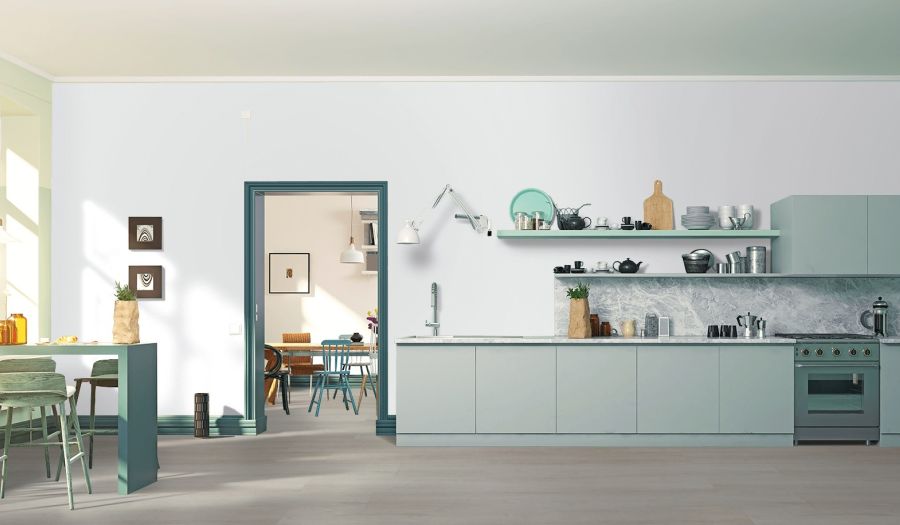
7 Common Mistakes to Avoid When it Comes to Subfloor Preparation
People often spend a lot of time choosing a flooring product and looking for various suppliers that offer high-quality, affordable options. What often gets lost in this decision-making process, though, is what the subfloor preparation will entail. Unfortunately, this preparation is so important that failing to see it through the right way can become a disastrous and costly problem. Understanding the common mistakes to avoid during subfloor preparation, will save you a lot of time and money in the long run.
What is a Subfloor?
Your floors are not merely those surface laminates, carpets or luxury vinyl tiles visibly seen throughout your home. Your flooring system is made up of different layers, one of which is the subfloor. This is a substrate layer that forms the stable foundation of your visible flooring, and what supports your floors. It makes sense, then, that the better your substrate floor, the better your flooring installation. When subfloor preparation is given priority, the flooring product you select will last much longer and perform the way it was designed to.
In some cases, this preparation is extensive, and not all DIY fanatics and homeowners possess the tools or the time to get the job done. Failure to plan and prepare well could lead to issues such as:
- Flooring that is not even.
- Surface variations that take away from the aesthetic of a seamless installation.
- More wear on areas of the flooring that are elevated.
- Flexing, movement and bending in places.
- Annoying sounds like creaking or squeaking when walking over the floors.
- Separation of flooring planks or carpeting seams that come apart.
- Sagging in some spots.
- Water damage to the flooring, which is costly to repair.
Eventually, these issues may become so bad that one will have to remove the floors and start all over again, which is an expensive process in many cases.
Factors that One Must First Consider
There are endless aspects of subfloor preparation to first consider. Unfortunately, without the right expertise or know-how, many homeowners who opt to go at the process alone, overlook these factors. Your subfloor preparation will largely depend upon the type of flooring that you plan on installing afterwards. Then you will need to look at the size of the project, the humidity in the room and the pH and moisture found in the substrate, as well as previous sealers and chemicals that have been used on it.
The current condition of the substrate floor is what will determine how much work must be done – the subfloor must be flat, completely dry, clean and free of debris, and smooth to the touch. The integrity of the floor before you begin will give you an indication of whether the preparation process will be quick and effortless, or if you are in for a frustrating, time-consuming task.

7 Mistakes DIY Installers Often Make
Professional flooring installers who have worked in the industry know all too well what a poorly prepared substrate floor looks like. Oftentimes, part of their job is to come in and fix the overlooked issues the previous installers missed. These mistakes can range from less severe to serious, but it is far better to rectify these issues as soon as possible before they ultimately become worse. Some mistakes to try and avoid include:
- Failing to create a flat surface. While it is impossible to have a perfectly flat substrate floor, there should be no obvious crowning or depressions that lead to discomfort underfoot.
- Ignoring parts of the floor that are not structurally sound. There may be places in the substrate floor where there is visible cracking, deflection, instability, or weakness in the structure. This must be remedied before any installation occurs above this surface.
- Failure to properly clean the subfloor. Preparation is not merely looking at the state of the substrate flooring, but ensuring that no debris, dust, dirt, or loose materials are left on it. It must also be cleaned of any oily or sticky substances that may influence the installation.
- Not testing it for moisture. Moisture or dampness that is allowed to sit in the subfloor during preparation will end up damaging the flooring installation.
- Not smoothing it out first. A well-prepared substrate floor is smooth and completely free of lumps, bumps and texture.
- Not preparing tiles properly. Tiles can be used as a substrate floor, but the grout lines must first be filled in as the surface must be completely flat and smooth.
- Using underlayment as a quick fix to cover up issues. This is not a sustainable solution, and it is better to remedy the root of the issue than try to hide it.
Why Hire Professionals Like Top Carpets and Floors?
Subfloor preparation is incredibly complex and takes careful planning. For this reason, it is always recommended that you seek out the assistance of professional installers like those at Top Carpets and Floors. Not only will we assist you in finding superb flooring solutions to meet your needs, but we will handle the installation process, including the prep work, in a jiffy.
If you're looking to get started on your flooring journey, then click here to get a quote today!

